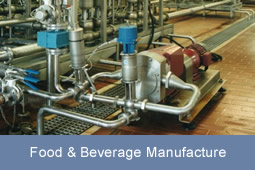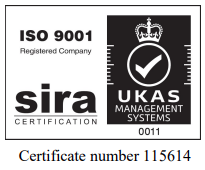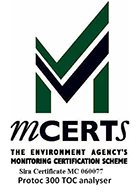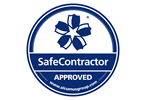Definition
UV absorption measurement is used in the testing of water, as a general indicator of water quality and typically where there may be a high concentration of dissolved organic matter. Measurement across the UV spectrum and in particular at 254nm, can be used the derive the Total Organic Carbon (TOC) and associated BOD and COD of a water sample.
UV254nm absorption is also sometimes referred to as SAC (Spectral Absorption Coefficient). When used to predict the associated TOC, COD or BOD since each chemical species absorbs the UV spectrum differently, the test must be applied carefully.
Methodology
The optical sensor may be supplied as a direct insertion probe or as a flow through instrument accommodating different application requirements. The probe format may be advantageous allowing for direct insertion without the use of sample acquisition or sample preparation.
Different measuring ranges are also available. The optical path length defines the possible measuring range and associated measurement sensitivity so this need to be carefully selected for any given application. The instrumentation may be configured to report UV transmission at 254nm (UVT); UVA absorption at 254nm (UVA) or the derived TOC of the sample. The associated COD or BOD of the water sample may also be computed using an application specific calibration. (It may also be possible to report the Nitrate/Nitrite concentration dependent upon the selected sensor model). Measurements are reported on a selectable user interval.
For UVA measurement, suspended solids also absorb transmitted light and interfere with the measurement. Consequently, for some applications it important to ensure that the sample is either pre-filtered (flow through measurement) to remove the suspended solids or the instrument is capable of applying suspended solids correction, if the method is to trend TOC / DOC (dissolved organic carbon) reliably.
Automatic cleaning (compressed air or possibly a wiper system on probe systems) may be integrated to reduce maintenance and optimise measurement repeatability.Limitations Of Test
Every organic chemical absorbs different amounts of UV254nm and indeed, not all compounds absorb light in the UV spectrum. As a general rule, dissolved organic compounds with double bonds (unsaturated bonds) within the chain structure absorb strongly whilst single bonded (saturated bonds) compounds do not. Hence, the technique is not typically suitable for applications where the contaminant is unknown or highly variable in it's chemical form. The technique can be carefully applied where the sample matrix is relatively stable and the contaminants are known to strongly absorb.
Alternative On-line Methodology
Where the sample matrix is highly variable or contains components which do not absorb at the 254nm frequency, the alternative UV-persulphate technique may be more suitable.
The wet chemistry methodology is not compound sensitive and does not suffer interference affects from suspended solids. By determining the TOC or Total Organic Carbon component of a sample stream, a correlation may be set up with other test such as COD and BOD. Peak organic loads may therefore be determined in real-time allowing for improved measurement and control.
Please contact PPM to discuss instrument selection for your specific application.








